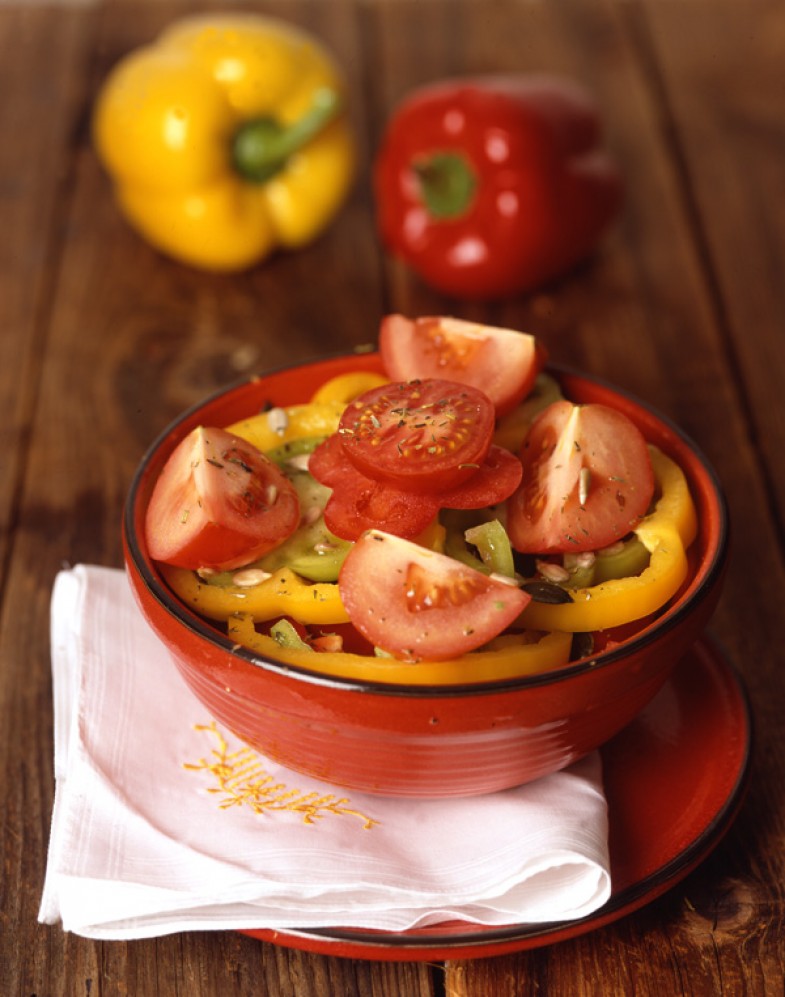We are lucky to live in a golden age of cuisine. Never have we enjoyed so many choices of different foods from diverse cooking traditions than today.

CC Licensed http://openphoto.net/volumes/ska/20060125/opl_GB-Salat.jpg
My 13-year-old son can’t get enough empanadas (South America), spring rolls (Asia) and humus (the Middle East). I had never eaten these foods when I was his age—in fact, I had never even heard of them. The future of cuisine at that time appeared to be something like space food sticks (“What the astronauts eat”), an amalgam of nutrients and additives squeezed into a shape that looked like it came out of a test tube. Yccchh!
All’s not ideal in the grocery aisles, however. Most American meals are heavily processed and made from genetically engineered ingredients—which is unappetizing at best, and quite possibly troublesome for our health. Just last week, the FDA cleared the way for selling meat from cloned animals. and the news media helpfully alerted us to the fact we are probably already eating it.
But for the careful shopper, with a little extra money to spend, there’s a wonderful array of organic foods, local foods, fair trade foods, free range foods and ethnic foods. Many people are giving more thought, and introducing more creativity, to mealtime than ever before.
Yet in all this enthusiasm about the latest food trends—chronicled in succulent detail on cooking shows, in cookbooks, and throughout dinner conversations—it’s rarely mentioned that cuisine is an elemental part of the commons. Cuisines, spices, varieties of fruits and vegetables, livestock breeds, styles of cookware and billions of recipes all have been generously passed down to us from cooks of the past. You could almost say, to paraphrase Sir Isaac Newton, we eat on the shoulders of culinary giants.
But while the age of globalization delivers us wonderful treats from around the planet, it also threatens the existence of lesser known food traditions. As the universal staples of pizza, hamburgers, and Coke invade the dinner table in remote villages, many traditional dishes may be gradually forgotten with no one from the outside world ever tasting them.
That would be a devastating loss of our cultural and culinary biodiversity. Many times outsiders appreciate a local food more than the people who’ve been eating it all their lives. Pizza, for instance, was a minor part of Italian cuisine until American soldiers came home from Naples after World War II raving about how great it was.
Saveur magazine (Nov. 2007) heralds a campaign in the Spanish region of Catalonia that holds promise for resurrecting other cuisines in danger of fading away. In the small of city of Sils, northeast of Barcelona, nine older women all over the age of 65 gathered their favorite recipes of “how people used to eat” and published a cookbook, which became a national bestseller.
“They didn’t see it as a cookbook but a historical exploration, an ethnography of our food,” says Francisco Anoro, a Sils resident who encouraged them to do the project.
The cooks of Sils have now become celebrities, taking over the kitchen of Hotel Barcelona Palace for a week, and touring Italy, Germany and other European nations to demonstrate their recipes—and hopefully inspiring similar efforts in those places.
This kind of attention helps us recognize the value of traditional foods. As Maria Teresa Sasanedas, one of the younger cooks who learned from these masters notes, “At home no one ever thanks you for cooking but you make something here [at a demonstration] and everyone applauds.”



